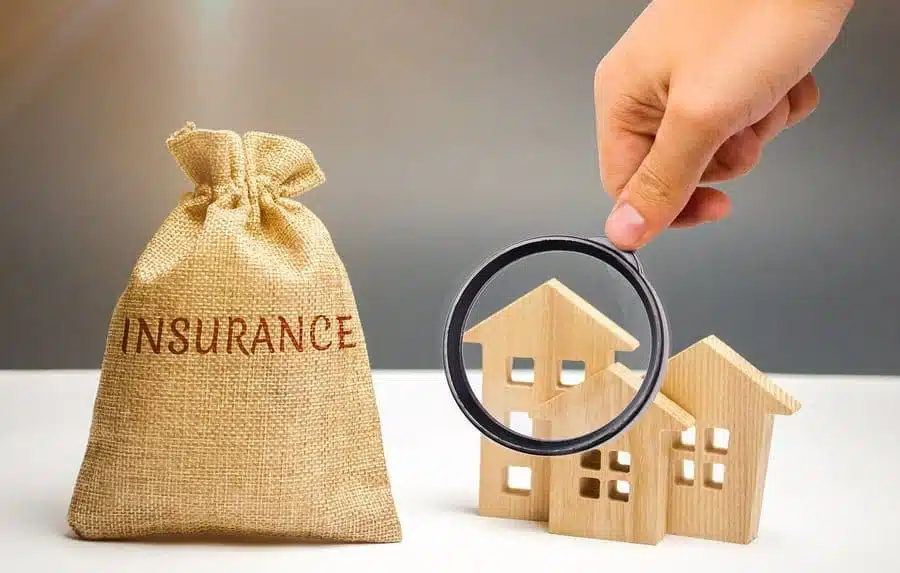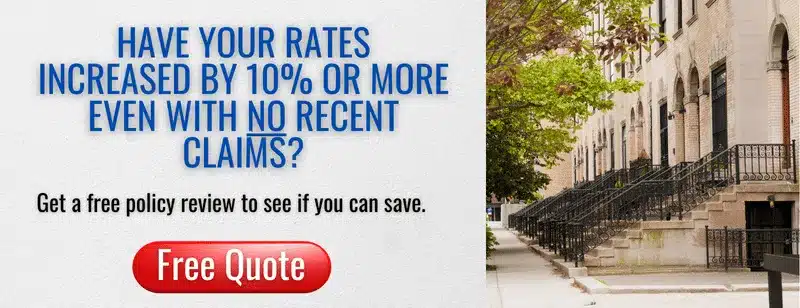Key Factors Influencing Insurance Premiums for Rental Properties in NYC

Whether you need to insure a two-family brownstone in Park Slope, a warehouse in the Bronx, or an apartment building on the Upper East Side, insurance companies look at many of the same factors when insuring a rental property to calculate your premium.
The good news: You can make those factors more attractive to your insurance company—and lower your insurance premiums.
How Location and Building Type Affect Property Insurance Rates
“Location, location, location” isn’t just the mantra when buying a building. It’s also the largest factor in determining insurance rates.
Insurance companies divide the city and state into many rating territories. They look at crime statistics, fire protection and other community factors. They also calculate costs to repair or rebuild your building in the event of a fire or other disaster. Although you can’t change any of those factors, you can research insurance costs when considering potential investment properties.
If you’re considering insurance that protects your income if a covered event makes the property uninhabitable—and you should—the income generated could also be a factor.
For commercial or mixed-use buildings, the type of business(es) affects premiums as well.
How Building Age and Maintenance Influence Insurance Premiums
Most landlords, property managers and building owners don’t get excited about routine housekeeping and maintenance. But you should pay special attention to these important factors; after all, your insurance company does.
To get the best premiums, your insurance company wants to know that you’re taking care of your property. Not only do safety-related improvements, such as better lighting and the addition of a doorman, make your building profile more attractive, but they can lower your premiums as well.
Also, the age of your building can affect your insurance premiums in three ways.
- In general, older buildings may be more likely to need repairs and maintenance.
- Older or historic buildings, such as brownstones, may use materials or techniques that are difficult or expensive to repair or replace in the event of damage by a covered event, such as a fire.
- An older building may not meet modern building/safety requirements. Extensive damage may require additional upgrades for code compliance, such as adding a sprinkler system or fireproof doors.
Tenant Profiles and Their Effect on Property Insurance Costs
Two identical buildings can have drastically different insurance costs because of different types of tenants. A building occupied by older residents, for example, may present different insurance risks than one that primarily houses young families. For mixed-use properties, commercial tenant profiles can have a significant effect on insurance premiums.
It’s important to be as accurate as possible when reporting who the tenants are in your building. When tenants change, make sure your agent/broker knows. This is especially important for commercial tenants in mixed-use properties. Failing to report this information could result in a denied claim or a cancellation of coverage. You may also want to revise rental rates if insurance premiums will change as well.
The Link Between Claims History and Insurance Premiums
An insurer will look at three categories of claims history when setting insurance rates:
- The claims history of the building
- The claims history of the owner
- The claims history of the neighborhood
If the previous owner had multiple claims because of poor maintenance, for instance, make sure your agent/broker knows that you’ve corrected the issues and have a mechanism for ensuring better maintenance under your ownership. (A track record of timely maintenance with other buildings will help immensely.)
When considering filing a claim for a relatively low amount, especially if the amount isn’t that much more than the deductible, pause for a moment. You don’t want that small claim to lead to higher premiums. A broker/agent can help you determine when you should or possibly shouldn’t file a claim.
Reducing Premiums Through Safety Upgrades and Risk Management
Building ownership, particularly for landlords, comes with inherent risks of loss. Keep in mind that many of those risks are shared with your insurance company.
Savvy landlords keep in mind the three components of comprehensive risk management:
- Avoiding risk
- Controlling risk
- Transferring risk
Risk avoidance means not participating in risky activities and proactively eliminating potential risks. Examples include making sure contractors take the proper safety precautions or shoveling snow from the sidewalk before anyone trips.
Risk control involves having a plan to minimize the impact of potential risks. If someone slips and falls on your property, for example, have policies and procedures in place to deal with the situation, and ensure every employee is trained to follow them.
Risk transference shifts responsibility to a third party. This is what business insurance does. For example, Loss of Rents coverage transfers the risk of lost income from you to your insurer if tenants have to move out due to building damage from a covered peril.
One additional note: Risk management includes not only risks related to tenants, but also to contractors and others on the property.
Understanding Regulatory Impacts on Insurance Premiums
Upcoming or proposed legislation or regulations that can affect insurance premiums is mostly out of a building owner’s control. However, before purchasing a building or choosing between two buildings, perform some due diligence. Is the state, city or borough considering legislation that would affect a building and its insurance premiums? Are any municipal departments “clarifying” existing regulations that will affect the building?
New York City publishes a guide with current landlord requirements, which is a good starting point for researching what areas the city is prioritizing,
For additional information, download our insurance planner for residential buildings.
Contact City Building Owners Insurance for a Policy Review
In short, when considering the purchase of a building, consult with a knowledgeable insurance broker/agent about how the location, type of building, tenants, and condition will affect insurance premiums. Similar buildings in different neighborhoods can have very different insurance costs.
If you already own a building, the above tips can help you mitigate risk and qualify for more attractive premiums.
Please contact us at 877-576-5200 for a free, no-obligation policy review to ensure you’re adequately protected and not overpaying for the protection and peace of mind you need.

Comments (0)